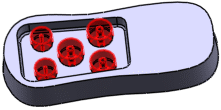Click Protected Feature
 in the Basic Features toolbar.
in the Basic Features toolbar.
Protected features can have different shapes. To know how
to create any of them, refer to the Prism, Sweep, Revolve, Thick
Surface or External Shape tasks in the Functional Modeling Part
User's Guide. The Protected Feature dialog
box that appears displays the Prism
 as the default shape to be created.
as the default shape to be created.
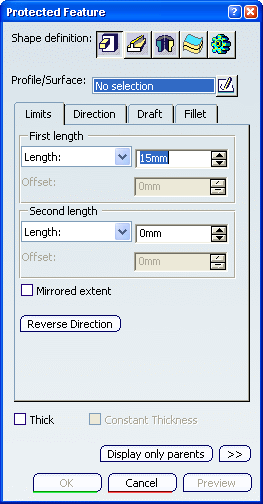
Select the profile you want to extrude.
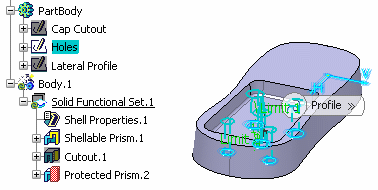
In the Limits tab, enter 20mm to define
First length.
Select the Thick check box that is available for the Prism,
Sweep and Revolve shapes. This option enables you to add material to
both sides of the profile.
Following additional options display:
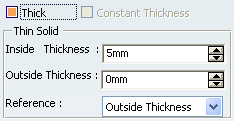
Enter 5mm in the Inside Thickness field and click
Preview.
Thickness is added to the inside of the profile.
Enter 2mm in the Outside Thickness field and click
Preview.
Thickness is added to the outside of the profile.

In the Reference list, select Neutral Fiberto add material equally
to both sides of the profile.
Click Preview to see the result.
The thickness you defined for Inside Thickness is evenly
distributed: a thickness of 5mm has been added to each side
of the profile.
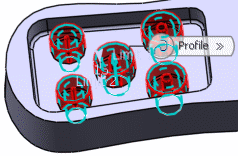
Click OK to confirm and create the protected feature.
As a protected area, the protected feature is displayed
in red. Protected Prism.X is added to the specification
tree in the Solid Functional Set.X node.
